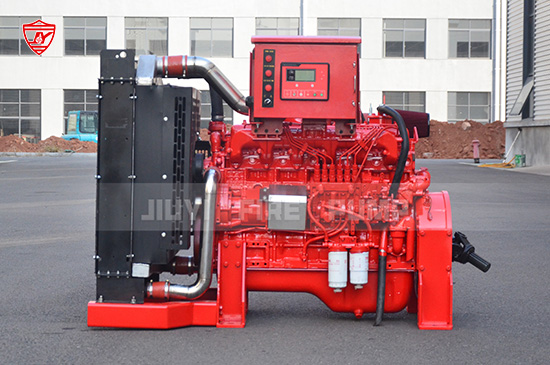A diesel fire pump plays a crucial role in fire protection systems, ensuring reliable water supply during emergencies. However, for optimal performance and compliance with NFPA 20, proper installation is essential. This article explores the key environmental factors necessary for an efficient and safe diesel fire pump setup.

1. Adequate Ventilation and Cooling
Diesel fire pumps generate heat and require sufficient ventilation to prevent overheating. The pump room should have proper airflow, including:
- Intake and exhaust vents to facilitate air circulation.
- Fans or louvers to regulate temperature and remove fumes.
- Compliance with NFPA 20 to ensure proper cooling mechanisms are in place.
2. Temperature Control
Extreme temperatures can affect the performance of diesel fire pumps. Key considerations include:
- Maintaining a room temperature of 40°F to 120°F (4°C to 49°C).
- Using heaters in cold environments to prevent fuel thickening and engine issues.
- Avoiding high humidity levels that could lead to corrosion or electrical failures.
3. Fuel Storage and Safety
To ensure a continuous fuel supply and compliance with fire safety regulations, follow these best practices:
- Use a dedicated fuel tank with a minimum of 8-hour runtime capacity.
- Store fuel in fire-resistant enclosures to minimize risks.
- Perform regular fuel quality checks to prevent contamination.
4. Protection Against Flooding
Water exposure can damage a diesel fire pump and lead to failure during emergencies. Consider:
- Installing pumps in an elevated, flood-resistant location.
- Using sealed enclosures to protect electrical components.
- Implementing drainage systems to prevent water accumulation.
5. Easy Accessibility and Maintenance Space
Routine inspection and maintenance are essential for fire pump reliability. Ensure:
- Sufficient clearance around the pump for easy servicing.
- Proper lighting and signage for quick identification.
- Compliance with NFPA 20 maintenance guidelines to ensure longevity.
Conclusion
A well-planned diesel fire pump installation enhances safety, efficiency, and reliability. By ensuring proper ventilation, temperature control, fuel safety, flood protection, and accessibility, you can maximize pump performance while meeting fire protection standards.
